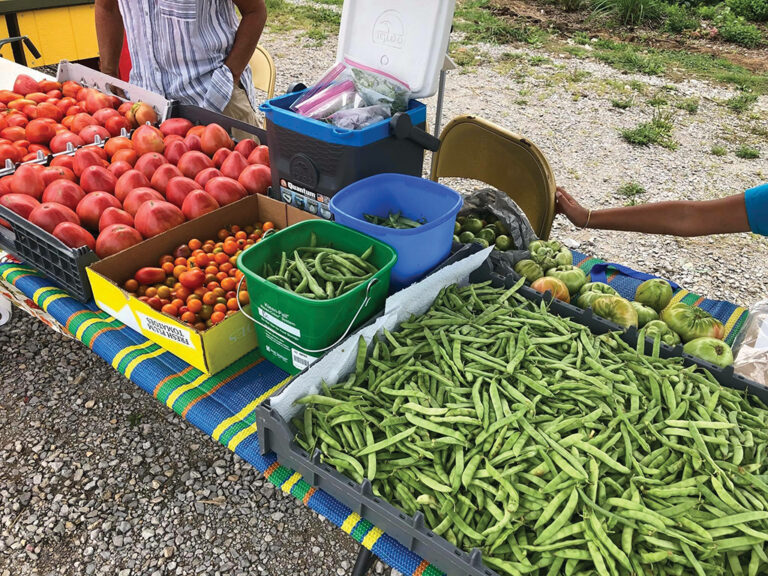This bounty of tomatoes and beans grown in the garden behind the church helps decrease food insecurity for Berea’s children and their families. Children involved in the garden project set up a roadside stand to sell the crops and raise money for school clothing and supplies.
How a garden and a little faith feeds an entire community
About halfway down Morgan Street, in Berea, a stone marker memorializes the place where Berea College founder Reverend John G. Fee began his mission. The stone reads: “UPON THIS SITE STOOD THE OLD GLADES CHURCH IN WHICH UPON INVITATION OF CASSIUS CLAY JOHN G. FEE FIRST PREACHED IN BEREA 1853.”
Here was the budding ambition to reach out to the underserved and a call to plant the seeds of equity. The community chased him off, not merely disinterested but adamantly opposed. Today, in the same spot, a different community rises to meet a new and noble challenge: feeding hungry kids.
After years of reaching out, they were coming to us with a request. We couldn’t turn it down. This is exactly what we were looking for.
Pastor Rick Fulton, Glades Christian Church
A lot has happened since Fee’s first sermon. The old church was torn down and Glades Christian Church was built in its place across the creek. Rick Fulton, senior minister there, describes a period of time when the church was “invisible,” a problem remediated only by the erection of a pizza chain across the road and associated traffic. Even then the church was nearly nameless, known locally as “the church across from Little Caesar’s.”
The monument marking the location of the old church is now the centerpiece of a Berea Housing Authority neighborhood, where public housing residents struggle to make ends meet. Minister Fulton, rueful of not knowing the church’s nearest neighbors well, sought in vain ways to establish a relationship. Then one day, Morgan Street families came to him.
“After years of reaching out,” Fulton said, “they were coming to us with a request.” They wanted to use the little patch of land behind the church to plant a garden. “We couldn’t turn it down. This is exactly what we were looking for. We weren’t using the ground.”
What Fulton didn’t know was that this garden and his church were about to become the epicenter for a community-wide project to feed low-income children, provide learning spaces and join forces with other organizations with similar goals.
“LeForce” behind it
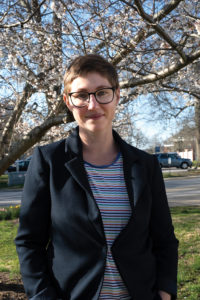
Berea College alumna Martina LeForce ’07 knows what it’s like to be a hungry kid. “I grew up poor,” she said. “We didn’t have food all the time. Food was a big shortcoming.”
LeForce has family on Morgan Street, her mother and niece, who, like other public housing residents there, did not qualify for government food assistance, but still had trouble meeting the food budget in the summertime when kids lose access to free meals at school.
LeForce understood this was a problem facing a number of other families in Berea and began brainstorming ways to address it. Community gardening could be one way to approach it, she thought. Walking along College Square one day, she saw the logo for Grow Appalachia, the college-housed program dedicated to addressing food insecurity in Appalachia, primarily through community gardening.
Though headquartered in Berea, Grow Appalachia’s mission had focused farther out where the declining coal industry had left communities in dire straits. Over the past 10 years, Grow Appalachia has worked with more than 6,000 families, who have grown more than 4 million pounds of food—enough to feed themselves and sell at the market for income.
It just so happened that Berea College President Lyle Roelofs had approached David Cooke ’82, founder and director of Grow Appalachia, about reaching out more locally. LeForce’s proposal to Cooke to start a summer meals program and community garden at Glades Christian Church, then, came at just the right time. Cooke agreed to provide the funding for her project and bring her on part-time to work on it.
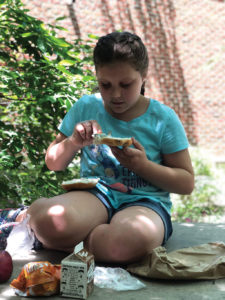
“Meeting with housing-authority residents and the church, we found a common need: a place for children to gather and to have free meals during the summer, and also have a place to garden. I brought the idea to David, and he gave me the support to start researching a summer food-service program at the same time I was developing the garden.”
“Kids have real needs in the summer,” Cooke said. “Kids deserve to have good food, they deserve to not be hungry and they deserve to be well educated. That’s what this work is all about.”
Grow Appalachia and Berea College partnered with the U.S. Department of Agriculture (USDA) and the Kentucky Department of Education to create the Berea Summer Food Service Program. Sodexo, the same company that provides dining services in the Berea College Mountaineer Dining Hall, would provide nutritious meals for Berea’s kids.
In 2016, LeForce partnered with Berea Community School, the Madison County Public Library, local churches and property managers to serve 13,880 meals at 23 meal sites across town. That same year, she gathered up folks on Morgan Street and introduced them to Minister Fulton, who allowed the residents to plant 10 raised garden beds.
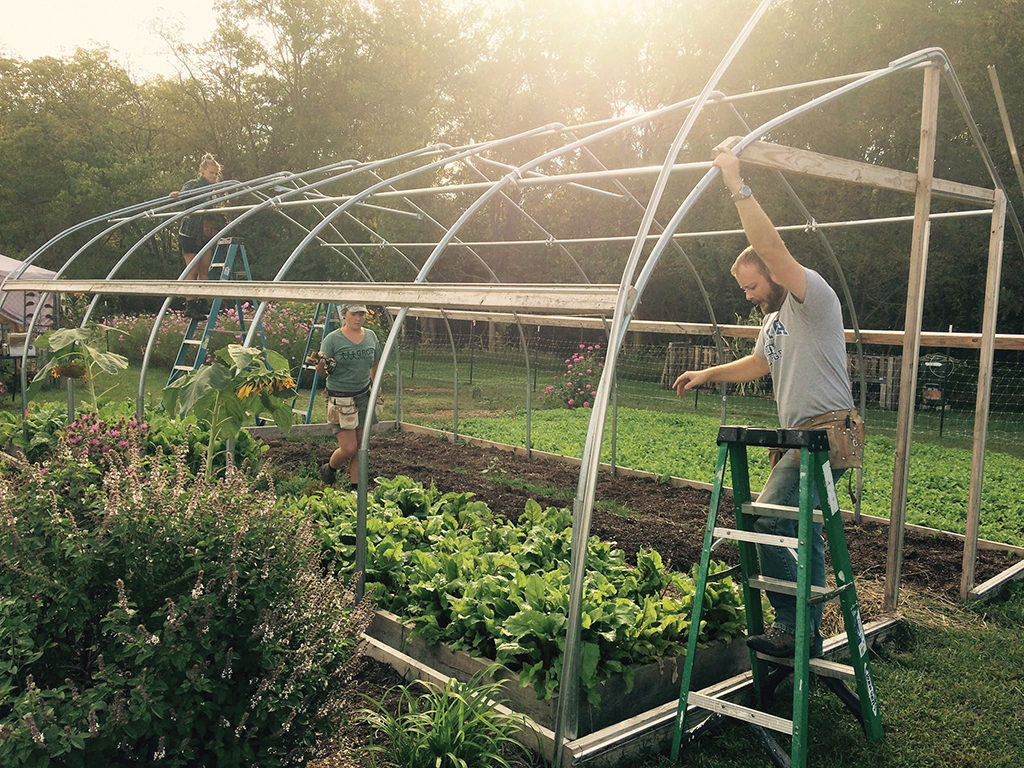
The program and the garden grew from there. In 2017, they planted 15 raised beds, Grow Appalachia built them a high tunnel (also called a “hoop house”), and the Berea summer meals program served nearly 18,000 meals. Grow Appalachia then expanded the program to serve as an after-school meal sponsor with the USDA At-Risk After-school meal program. By 2018, what began as a summer feeding program and community garden project had become a full-time job for LeForce, now the founder and director of the Berea Kids Eat (BKE) program at Grow Appalachia, which recently started providing “backpack meals” on the weekends in high-poverty neighborhoods.

Raising crops and kids
For the folks on Morgan Street, the garden has grown more than food. It’s grown opportunity, togetherness and a sense of self-sufficiency. Loretta and Paul Reynolds moved to the neighborhood after disability and the housing crisis displaced them from their farm. With two of seven children still at home, the Reynolds family only needed the means and opportunity to do for themselves.
“With the raised beds,” Loretta said, “it’s not a lot of strenuous work, and you get a lot out of it. It done us all winter. We still got some put up to start the new season next year. It helps to feed the children when you’re low on income.”
The kids, 16 and 12 years old, worked in the garden alongside their parents, growing beans, tomatoes and peppers, among other crops, and reaped not only a bountiful harvest, but a lesson in entrepreneurship as well. They set up a roadside stand to sell their excess and earned money to purchase school clothes and shoes for the year.
“It teaches them when they get a dollar in their hand, it can go for something helpful,” Loretta said.
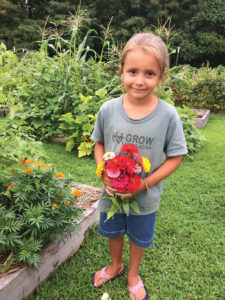
In all, about 14 children have regularly committed themselves to the garden, and close to 30 others stop in frequently. Only now, the garden doesn’t only produce food—it produces beauty and learning opportunities.
“Even though our primary focus has been on feeding kids,” LeForce said, “we don’t want to be a program that is just about food, because kids need more than food. During the summer a lot of these kids drop off the radar, especially in the neighborhoods we go to, so Glades is a great convergence point.”
This convergence point now includes flowers, herbs and a certified monarch butterfly waystation and pollinator garden. Last year, the kids raised 320 monarchs from caterpillar to chrysalis to butterfly and named each butterfly they released.
“Kids having input, having ownership, completely shifts their interest level,” LeForce said. It was this ownership that led to flowers and butterflies, she said, because the kids wanted things that “look pretty and smell good.”
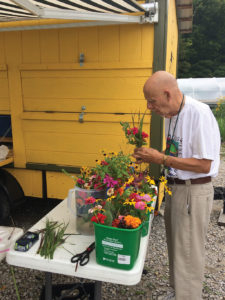
Some of the food, flowers and herbs produced go to the Berea Faith Community Outreach Food Bank, where more than 600 families visited last year. Jerry Workman ’60, volunteer director at the food bank, says this year, in addition to being a summer meal site, there will be flower and herb gardens planted outside.
“We’ll have the families go out there and pick herbs and flowers when they come to the food bank,” Workman said. “A lot of the people we are working with today are in rented homes, and they don’t have places for gardens.”
A story of partnerships
The tendrils of Glades Community Garden stretch far beyond Morgan Street now. Six low-income neighborhoods are involved, and a plethora of organizations have joined together to make this little garden in a church yard a hub for community service.
Boy Scout Troop 51 teamed up with the youth of Glades Christian Church and some Berea College faculty to clean up the creek dividing Morgan Street and the church. Together, they cleared the stream of hypodermic needles, invasive plant species and 20 bags of trash. Sodexo provided snacks for the event.
Minister Fulton opened up the church community room all day, all summer long, to host a number of events born of other partnerships. The site has hosted art studios, bouquet making classes, STEAM (science, technology, art and math) workshops, and an “herbal petting zoo” that encouraged kids to rub and smell plants from the garden.
LeForce enlisted Berea College sociology professor Dr. Andrea Woodward to conduct a food-waste study so the summer meals site could provide food kids are more likely to eat.
“We found that getting kids to try food in a garden setting means they’re more likely to eat those foods later,” LeForce said. “The best way to do that is to grow funky types of lettuce, fun types of tomatoes, weird radishes and carrots, things that spark their visual interest and can be put on sandwiches.”
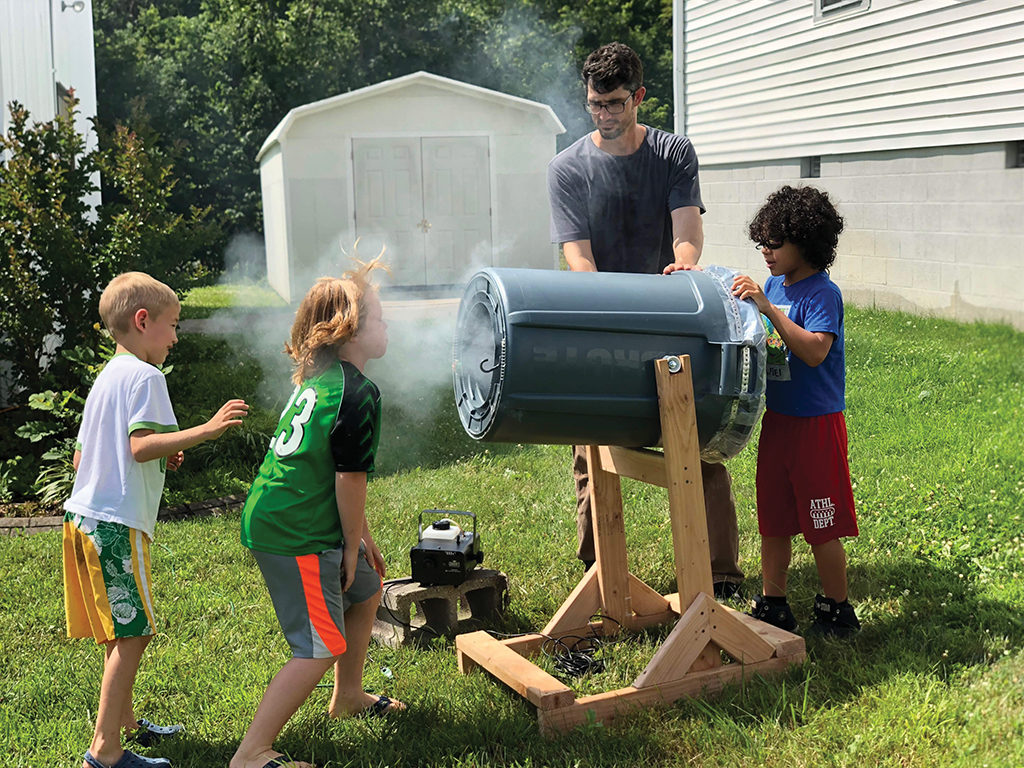
The list of partnerships is quite long and has enabled BKE to pull in groups that otherwise would not work together. Berea College’s Forestry Outreach Center is working through the program to develop a gardening curriculum specifically tailored to classes at Berea Community Schools so teachers can do garden projects with their students. A history teacher, for example, can plant a colonial herb garden and use it as a conduit for learning. The food produced through this curriculum could then be introduced to the school lunch program.
“What makes our model unique is we’re all looking for the win-win-wins,” LeForce said. “We have the same groups trying to work with the same neighborhoods. This can be duplicated. It will translate to the greater region.”
The latest “win-win-win” situation LeForce is engineering is a partnership with the College’s computer science department to refurbish laptops—once used by staff and students—to create a computer lab at the church community center to support summer and after-
school learning.
That church with the garden
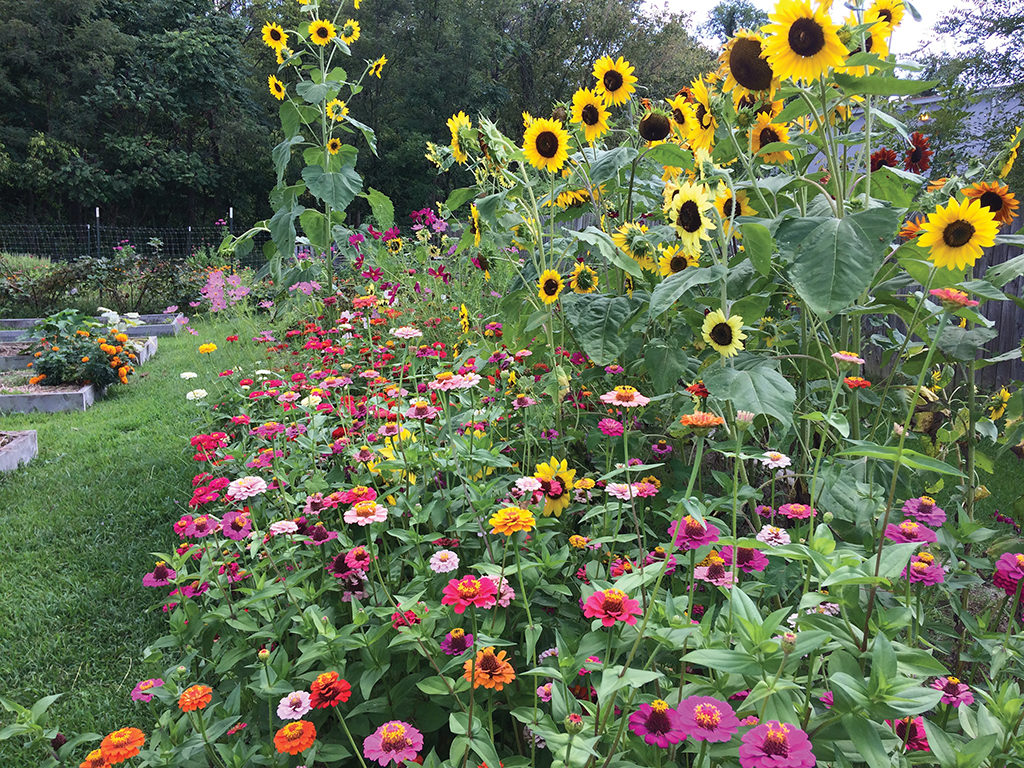
“The people on Morgan Street are hard workers,” Minister Fulton said. “They really are. The garden has grown some really strong friendships. It’s opened doors for us to be friends and neighbors.”
After years of being the church across from the pizza place, the oldest church in Berea has found new life.
“The garden has become somewhat of an attraction,” Fulton said. “It’s amazing the number of people who come by who don’t have anything to do with the garden but heard about it and wanted to see it. Even though we’ve been there for more than 160 years, we were basically invisible. Now we’re the church with that beautiful community garden.”


